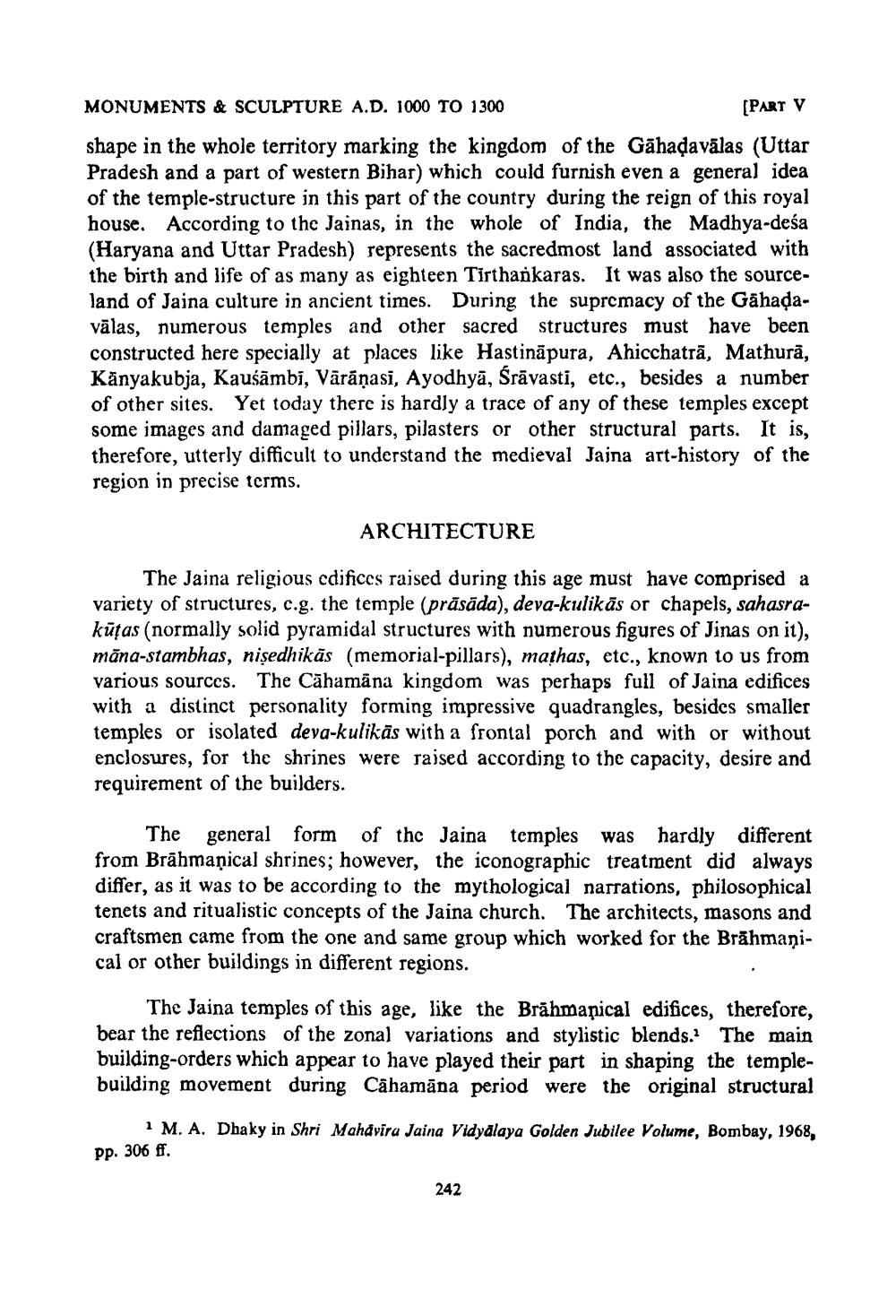________________
MONUMENTS & SCULPTURE A.D. 1000 TO 1300
(PART V
shape in the whole territory marking the kingdom of the Gahadavālas (Uttar Pradesh and a part of western Bihar) which could furnish even a general idea of the temple-structure in this part of the country during the reign of this royal house. According to the Jainas, in the whole of India, the Madhya-deśa (Haryana and Uttar Pradesh) represents the sacredmost land associated with the birth and life of as many as eighteen Tirthankaras. It was also the sourceland of Jaina culture in ancient times. During the supremacy of the Gähadavālas, numerous temples and other sacred structures must have been constructed here specially at places like Hastināpura, Ahicchatrā, Mathurā, Kanyakubja, Kaušāmbi, Vārāṇasi, Ayodhyā, Srāvasti, etc., besides a number of other sites. Yet today there is hardly a trace of any of these temples except some images and damaged pillars, pilasters or other structural parts. It is, therefore, utterly difficult to understand the medieval Jaina art-history of the region in precise terms.
ARCHITECTURE
The Jaina religious cdifices raised during this age must have comprised a variety of structures, c.g. the temple (prāsāda), deva-kulikās or chapels, sahasrakūtas (normally solid pyramidal structures with numerous figures of Jinas on it), māna-stambhas, nişedhikās (memorial-pillars), mathas, etc., known to us from various sources. The Cāhamāna kingdom was perhaps full of Jaina edifices with a distinct personality forming impressive quadrangles, besides smaller temples or isolated deva-kulikās with a frontal porch and with or without enclosures, for the shrines were raised according to the capacity, desire and requirement of the builders.
The general form of thc Jaina temples was hardly different from Brāhmaṇical shrines; however, the iconographic treatment did always differ, as it was to be according to the mythological narrations, philosophical tenets and ritualistic concepts of the Jaina church. The architects, masons and craftsmen came from the one and same group which worked for the Brāhmaṇical or other buildings in different regions.
The Jaina temples of this age, like the Brāhmapical edifices, therefore, bear the reflections of the zonal variations and stylistic blends. The main building-orders which appear to have played their part in shaping the templebuilding movement during Cahamāna period were the original structural
1 M. A. Dhaky in Shri Mahavira Jaina Vidyalaya Golden Jubilee Volume, Bombay, 1968, pp. 306 ff.
242




